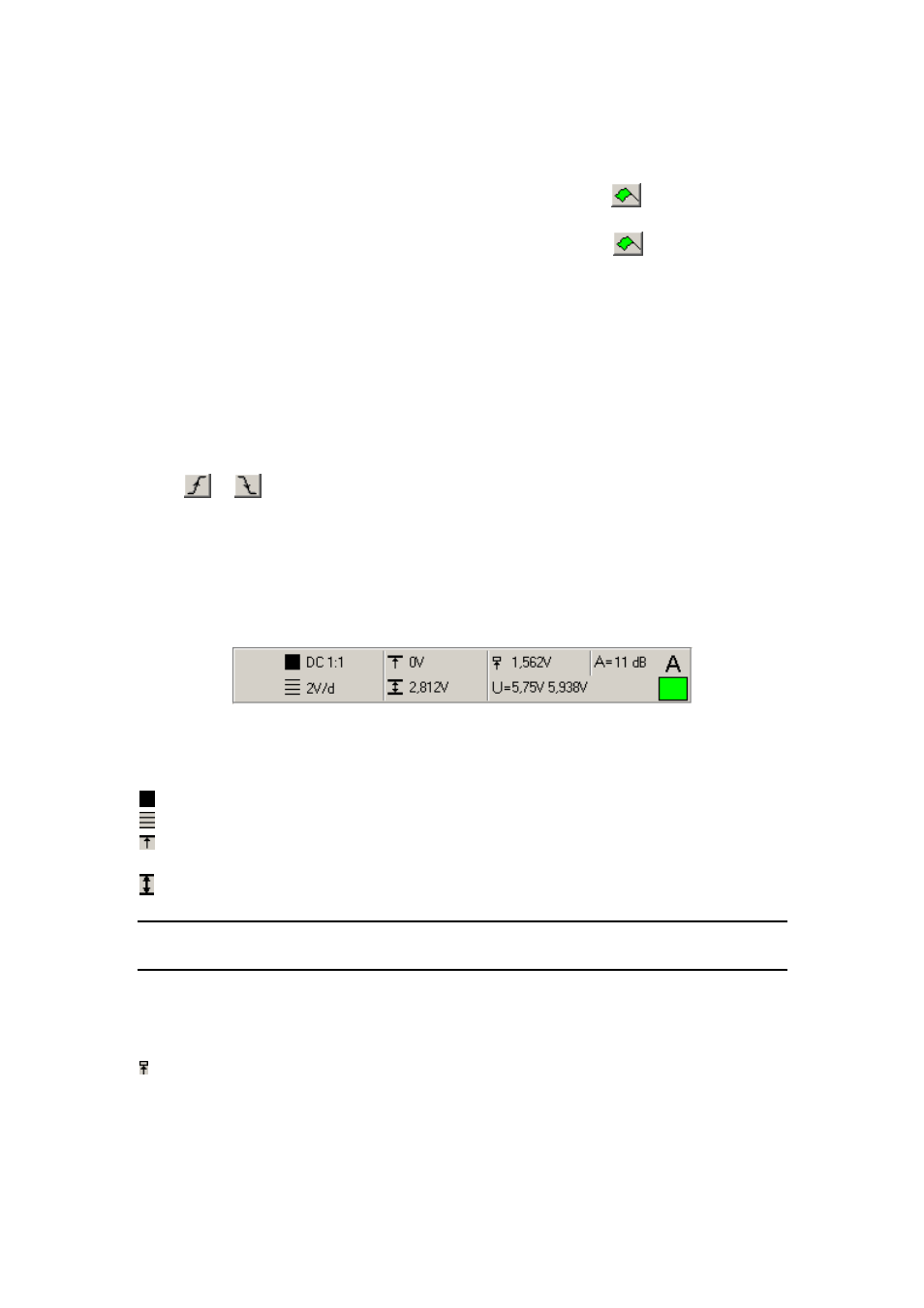Channel information, Fig. 4.1.13.1. – channel information – Dataman 520 Series User Manual
Page 50

DATAMAN oscilloscope
User’s Guide
„Auto“ – Measurement if repeatedly triggered. If the trigger event does not occur
before the timeout, the sweep free-runs without the trigger signal; otherwise it is
triggered by trigger.
„Single“ – Single measurement. Start by clicking on the
button. Sweep is
produced only when the trigger signal meets the threshold level and slope criteria.
„Manual“ – Single measurement. Start by clicking on the
button. Sweep is
produced regardless the trigger signal.
The „TGD“ indicator reflects the measurement state by changing its color:
red – the measurement has started, but the trigger event has not occured yet
yellow – the measurement has started, trigger conditions met, but the data acqusition
hasn’t finished yet
green – the measurement has ended, the data is displayed on the oscilloscope screen
Click „Hold“ button to pause measurement.
Click „Source“ combobox to select trigger source.
Click
or
to select trigger sensitivity on the leading or trailing edge.
4.2.9. Channel information
The channel information is displayed in the top of the main window.
Channel A information is located on the left, channel B information is located on the
right.
Fig. 4.1.13.1. – Channel information
The following information is displayed:
- information about coupling and probe attenuation ratio
- range
- voltage between horizontal cursor 1 and 0V (this information is not displayed
when coupling is set to AC)
- voltage between horizontal cursor 1 and 2
WARNING: If the improper probe attenuation is set the information will be
inaccurate.
„U(t)“ – minimum and maximum (in case more than one sample is displayed on one
point of the screen) voltage between 0V and the intersection of vertical cursor 1 and
waveform
- trigger threshold voltage
“A” – ratio of the peak-peak voltage of the waveform on the screen and the voltage
between horizontal cursors in decibels
- 50 -
